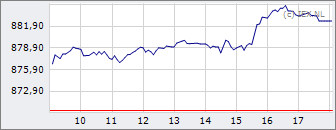Direct naar Forum

|
AEX
904,21
+4,61
+0,51%
09 mei
|
|

|
|

|
Germany40^ |
18.721,40
|
+0,19%
|
|

|
BEL 20 |
3.985,40
|
-0,75%
|
|

|
Europe50^ |
5.062,43
|
+0,16%
|
|

|
US30^ |
39.408,60
|
0,00%
|
|

|
Nasd100^ |
18.118,60
|
0,00%
|
|

|
US500^ |
5.215,72
|
0,00%
|
|

|
Japan225^ |
38.437,90
|
0,00%
|
|

|
Gold spot |
2.348,59
|
+0,10%
|
|

|
EUR/USD |
1,0779
|
+0,28%
|
|

|
WTI |
79,61
|
0,00%
|
|
#/^ Index indications calculated real time, zie
disclaimer